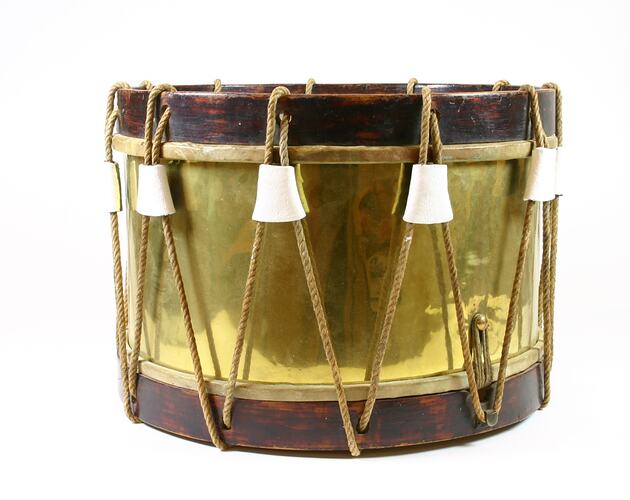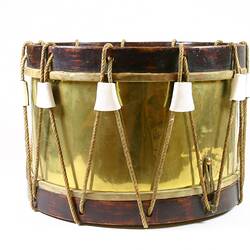The Tympanum (or Kettle Drum) was originally a military instrument; it was introduced into Orchestras in around 1675.
Typically tympani were made of copper and brass. English drums of the Baroque period were frequently made of copper; the French tended to use brass in their construction of tympani. (Montagu 2002, p. 41) Traditionally the drum is made of calf skin. High baroque tympani rarely had more than an inch or two between the diameters of each drum in a pair, often less. (Montagu 2002, p.82)
From the nineteenth century onward, drums show a difference of around 75mm in diameter. In sixteenth century Germany tension screws (taps) were first developed. Experimentation with tension screws led to the tradition of between five and seven tension screws on smaller drums, and six to eight upon the larger instrument. (Blades 2005, p. 231) The popularity of taps as a means of controlling tension coincides with greater orchestral use of the instrument. The ability to more efficiently and effectively alter the skin tension meant that the spectrum of sounds of the tympani could be better utilised. (Blades 2005, p. 230)
References
Blades, James. 2005. Percussion Instruments and Their History, Westport, Bold Strummer.
Montagu, Jeremy. 2002. Tympani and Percussion, New York, Yale Univeristy Press.
More Information
-
Keywords
-
Authors
-
Article types

